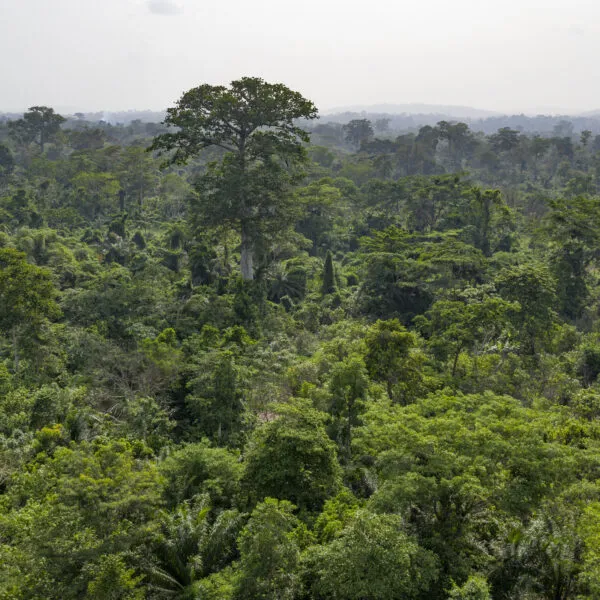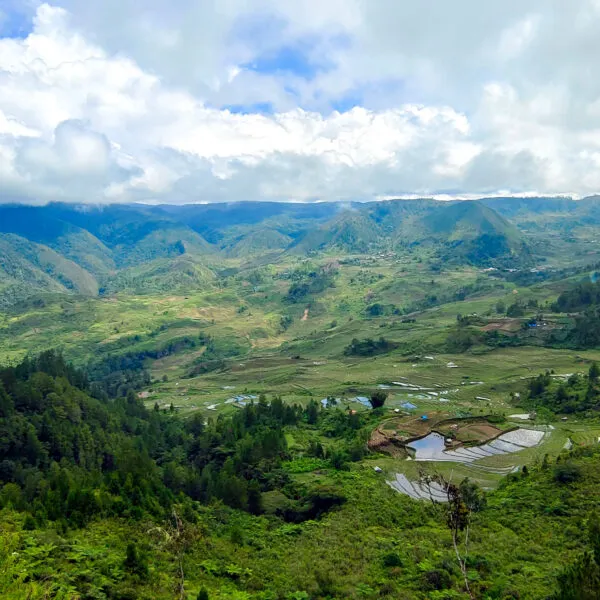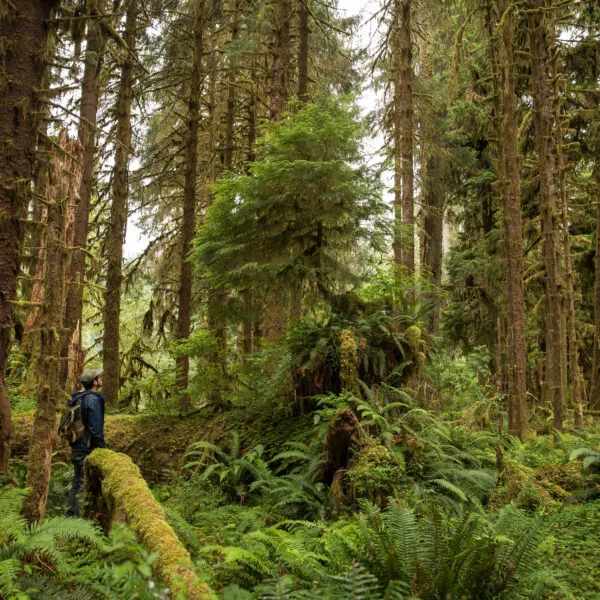Conservation and Use of Bursera spp. in the Tropical Dry Forests of Oaxaca: The Role of Markets and Certification in the Management of Non-Timber Forest Products
The main objective of this project is to examine the ecological and market dynamics of some non-timber forest products of economic importance from the dry tropical forests of Oaxaca, Mexico.
One case is the extraction of wood from branches of Bursera trees to elaborate alebrijes, carved figures sold mainly in international markets, providing good returns but based on resource overexploitation. Other case is the extraction of copal resin also from Bursera trees, a product used all over Mexico with a high ritualistic value, and from which we ignore the actual status of the natural populations and market structure.
We want to elaborate sustainable management plans for these products and do this with local communities in a participatory fashion. We also want to explore and discuss the value of certification as a way to get products (alebrijes elaborated with sustainable produced wood) into protected markets, though we ignore yet if this could also apply to the extraction of copal resin, since it is directed to a very different market and group of consumers.
Introduction
The alarming rates of tropical forest loss resulting from inadequate land use practices such as logging, cattle ranching and shifting cultivation, has motivated a search for new ways to use these forests. Marketing of sustainably harvested Non-Timber Forest Products (NTFPS) can provide economic benefits to local inhabitants causing minimal impact on ecosystems, reconciling conservation and development in species-rich forests (Godoy & Bawa 1993; Nepstad & Schwartzman 1992; Peters et al. 1989; Plotkin & Famolare 1992).
There is ample evidence that some traditional societies use a great variety of products obtained from natural ecosystems in an almost natural state (Alcorn 1984; Caballero et al. 1978; Prance et al.1987; Toledo et al. 1978). However, there are also cases in which extraction results in overexploitation (Bodmer et al. 1990; Browder 1992; Vazquez & Gentry 1989) especially when products are commercialized at a great scale.
My hypothesis is that most NTFPs that enter conventional or established markets, particularly those far away from the site of extraction, tend to be unsustainably harvested and therefore overexploited. This is because prices do not reflect the real value (i.e. the amount of work accumulated in manufacturing the object and the danger of extinction of the primary goods) in the conventional markets and, because of lack of information or interest, target buyers are not willing to pay an extra cost for a sustainable management, a concept that seems to contradict most of the market laws.
If commercialization of NTFPs is to contribute to the conservation of natural resources it should be not by being “competitive” in established markets but by entering protected markets. In protected markets consumers “pay an extra price” and thus choose to contribute to the conservation of natural resources in tropical regions.
Certification has been proposed as a mechanism to guarantee consumers and buyers sustainability in natural, social and economic terms, It is an instrument of forest policy (Chapela 1998) based on knowledge of the biological and socioeconomic attributes of a managing system. However, it is not a ‘miracle cure’ that alone can change trends in forest management, but a component of a strategic approach to the sustainable management of forests (Upton & Bass 1996) and a key factor in NTFPs commercialization through protected markets.
There is an associated risk and possible negative impacts on local cultural traditions when commercialization of NTFPs results in price increase due to a higher demand by external markets (Martin 1992). Research on actual marketing conditions, especially with resources that have great importance in subsistence economies is badly needed.
Burseras, Their Setting and Markets
In the region of the Central Valley of Oaxaca, a vigorous industry of wood-carved figures known asalebrijes has flourished in the last two decades. Almost nothing is known about the background of this highly successful rural industry. Two villages (Arrazola and San Martin Tilcajete) originally produced most of the pieces sold in local, national and international markets. Price of figures range widely: small alebrijes are sold locally for one or two dollars, while big ones reach several hundreds in the international market.
Nowadays the activity has expanded to a dozen or so villages in the Central Valley region. The natural populations of Bursera glabrifolia, the species originally used for the carvings, have been locally decimated during the last decade and the sources of wood have dramatically changed: I found through interviews that remote villages in La Cahada de Cuicatlan (located 100 km north of the Central Valley) are actual providers of copal wood. All the wood is illegally extracted and there is no control over its volume and provenance. There is one village in La Cahada located approximately 180 km from the city of Oaxaca (San Martin Toxpalan), where artisans have started to carve and sellalebrijes. This activity is lucrative in relation to other rural income sources and it is easy to predict that if this trend goes on, and if the resource continues to be overexploited, it won’t last long.
Bursera trees are also the source of copal, a resin known since prehispanic times and highly appreciated among indigenous and mestizo peoples all over Mexico. It is sold in most rural and some urban markets, it is still used as incense in most religious festivities and funerals, and is also used as medicine. We have not been able to make an assessment of the actual status of this resource.
Alebrijes are a commodity manufactured for international markets, the copal resin is used by Mexicans, has a high ritual value and is commercialized at a national scale. For these reasons, there is a conflict between the use of trees as wood for alebrijes and the use of trees as sources of resin, and we must address this issue: one activity is lucrative and has an international market, while the other is directed strictly to the national market (we ignore its actual value and status). A protected market would benefit the extraction of Bursera wood for alebrijes since it would guarantee the sustainable extraction of these wood but would in turn affect the popular uses of copal resin.
Objectives
Our first objective with this proposal is to make an assessment of the status of the Bursera species that are being used for carving and copal extraction, and to include them under a managing scheme that would guarantee their maintenance in the original plant communities. This managing plan will be done in close collaboration with local people, it will be published as a peasants manual and will be distributed to people from other communities at a special meeting designed to discuss and disseminate our results.
A second objective would be to work towards the certification of sustainably extracted wood to elaborate alebrijes. We do not know if copal resin extraction needs to be certified, but will also work towards the resolution of this problem.
The Study Area
There are Bursera populations and the human users of these resources in an area surrounding and encompassing the new Biosphere Reserve of Tehuacan-Cuicatión, created in 1998. An area characterized by a unique biological diversity (i.e. 40% of the flora is endemic) and a rich cultural background (seven ethnic groups inhabit the Reserve). The Valley of Cuicatlón within the state of Oaxaca is more humid than the Tehuacón Valley, it is also less known, and little research (mostly floristically oriented) has been done. Tropical dry forests or deciduous tropical forests are among the best represented forest types in this area. These are highly diverse ecosystems with more impediments for management than rain forests: trees are smaller and irregular in shape in the dry forests and few forest species are of value in the timber market. Local people use many species for subsistence (food, fruits, firewood, construction, medicines, fibers, ritual objects and utensils) or sell them at a local or regional scale. There are few exceptions of plants exploited on a larger scale, such as some species of palms and of Bursera.
The research will be based mainly in two communities San Juan Bautista Jayacatlón, a small village located 15 km south from the limit of the reserve, and another village located inside the reserve. We will conduct short participatory workshops to find out the best place. San Martin Toxpalan is one possible place since some villagers are already elaborating alebrijes.
Methods
To know about the actual demand of wood and resin, their extractive methods, the volumes and the extraction sites, we will conduct interviews to the artisans and wood sellers, and to people in market places to locate resin provenance.
We will locate and visit the sites of extraction and find out harvest methods, extracted volumes and commercialization routes, a difficult task with the wood considering commercialization is illegal.
We will evaluate Bursera populations to find out current resource stock (individuals per hectare, size, and location), yield (how many branches and kg of resin are produced per year and how is this related to the size of the individual, intensity of harvest, and perhaps timing since last harvest), andcurrent offtake (how much are people currently harvesting).
We will visit local and regional markets and will investigate marketing patterns of copal resin and will also explore the possibilities for alebrijes to enter protected markets. With the data obtained throughout this study we seek to elaborate solid criteria for certification, thus participating in an ongoing discussion not only in Mexico but in other countries as well.
Analysis and Application
The data obtained from the population ecology studies will be incorporated into a management plan, which will increase the stock by enriching planting, or increase the growth by clear cutting surrounding plants, or decrease the offtake by regulating cutting or resin harvesting, as needed.
All this will be conducted in close collaboration with the villagers, who will learn to do inventories, and manage their resources in a sustainable way. These results will be published in an accessible way to peasants who will be invited to discuss and comment the management plan, thus people from other communities inside the reserve can replicate the experience. We will also evaluate the issues of certification with local people and other grassroots organizations and NGO’s already engaged in this discussion.
This project will generate results that will contribute to the design of utilization and commercialization methods of non-timber forest products by local communities and thus will provide them with economic, social and ecological benefits. It will also be a precedent to guide and regulate the exploitation and monitoring of this resources in other regions with similar characteristics, contributing in the medium and long term to avoid negative impacts of resource over-exploitation.



